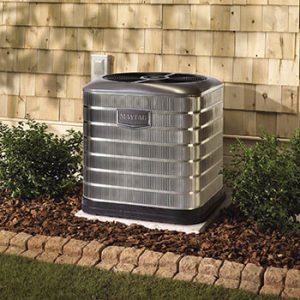A heat pump is technically a much different heating system than any other kind of furnace. It doesn’t burn or consume energy and convert it to Btus of heat. Instead, a heat pump moves free Btus of heat from the outside air into your home during winter. The only energy it consumes is what is required to move it. The tens of thousands of Btus per hour that a heat pump moves into your home are free.
In order for a heat pump to do its job at the lowest energy cost, so the homeowner is comfortable in the winter, here is the strategy I suggest:
- Decide on a thermostat setting that is acceptable for all the members of your household. This may take some negotiation to come to an agreement for one setting.
- On your thermostat, select heat and set the temperature.
- And finally, make it clear that no one in the household changes the thermostat temperature setting all winter.
Here’s why this works. The outside unit is the heat pump. It is sized for summertime cooling, which in southern Indiana makes it a little too small for the coldest periods of winter because our winters are colder than our summers are hot. Because of this, we have to supplement it in the winter. An all-electric heat pump system is supplemented with an electric furnace.
Now, an electric furnace generally uses three times more electricity than a heat pump. So, using it to “supplement” the heat pump is exactly what a homeowner should do to keep costs low. When outside temperatures are in the teens, a heat pump is still extracting Btus of free heat from the air to move into your home. But the quantity of Btus per hour might not be sufficient to maintain the temperature setting of your thermostat.
When the room temperature falls below your setting, the thermostat automatically turns on the electric furnace to supplement the heat pump and allows the heat pump to continue to run, capturing all the free heat it can, minimizing the need for long periods of electric furnace operation. As soon as the electric furnace assists the heat pump in getting your house temperature back to your thermostat setting, the electric furnace shuts off and allows the heat pump to continue maintaining your comfort at a lower cost.
You may occasionally hear recommendations to turn your thermostat to “emergency heat” when it gets cold, such as at or below 32 degrees. What that does is turn the lower cost heat pump unit off and allow the three times more expensive electric furnace to provide all your heating comfort. Keep your thermostat set at the heat position, not the emergency position, in order to be comfortable and have lower electric bills.
Allowing the heat pump to run, even continuously, is the least expensive manner to achieve your comfort. Programmable thermostats are promoted for saving money on a homeowner’s electric bill, and they can, but be aware the savings comes from turning down the temperature of your home for a period of time. Promotions of programmable thermostats never state save money and be comfortable. The “be comfortable” is sacrificed to save money. I have had conversations with many homeowners who are dismayed about how little they save with a programmable thermostat and then at times are not comfortable.
If you have questions about heat pumps and thermostats and how they all work, feel free to contact me at 812-738-3538 or email me at bgeswein@harrisonremc.com.
Bob Geswein
Energy Advisor at Harrison REMC





